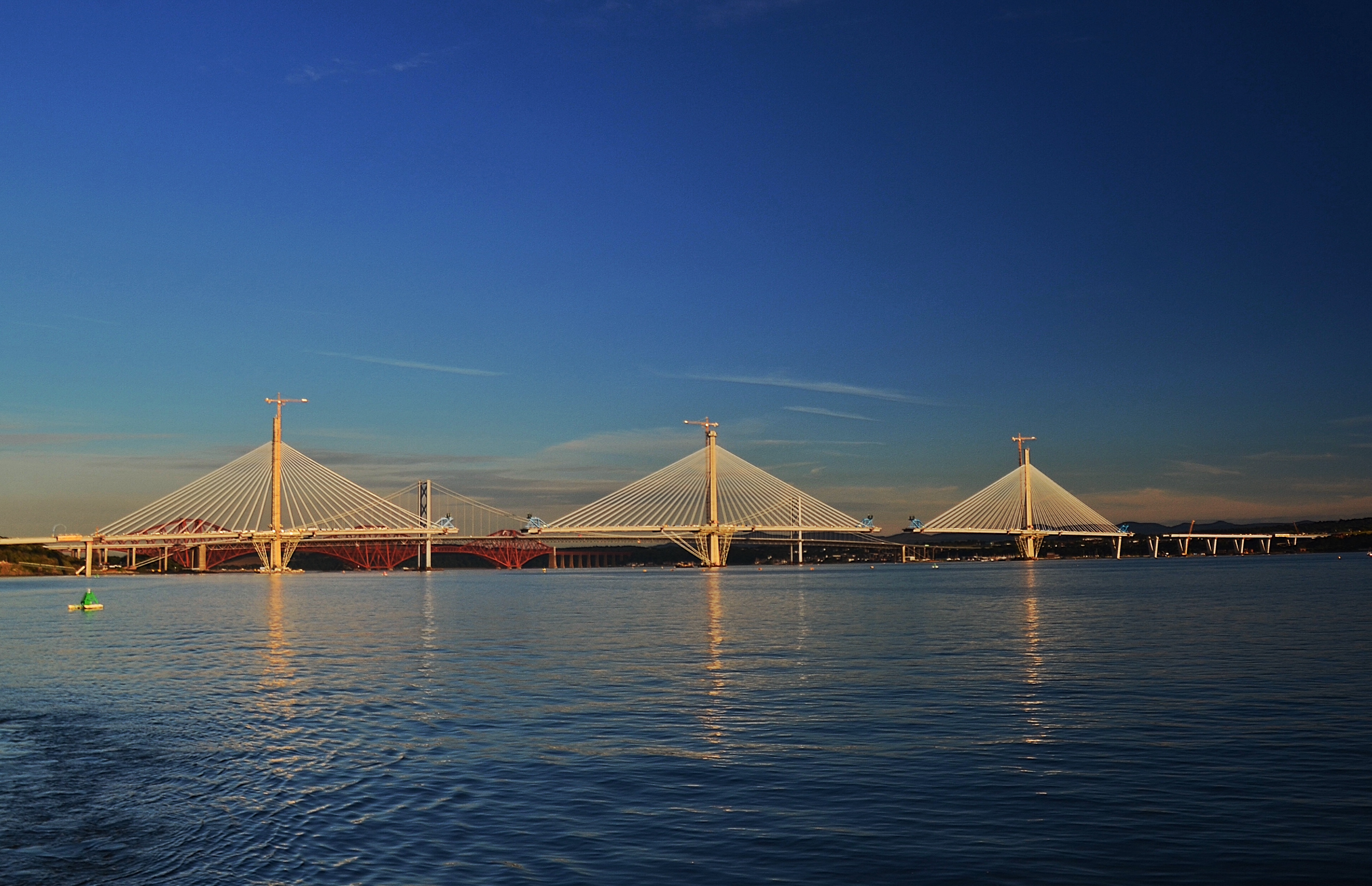by Graham Ross
Have no doubt about it, Scotland is ambitious.
Brave too –bold plans are emerging to create a true 21st-Century, carbonless, super-connected, intellect-driven economy and the infrastructure to run it on.
Scotland has many of the tools she needs to achieve this but she also faces enormous challenges generated by her characteristically extreme contrasts. But visionary planning and coordinated investment is required to realise our ambitions.
In order the achieve even a fraction of what we view as future Scotland we must, as a great Scottish polymath and father of urban planning, Sir Patrick Geddes, famously said in the early 20th century, ‘think globally and act locally’. And invest in our future.
Land of extremes
This is a place of extreme contrasts; with its historic and industrial towns and cities set amid vast and disparate rural agriculture and wilderness landscapes with stunning natural heritage. Scotland is highly urbanised, with 80 per cent of the population living on 2 per cent of the land.
We enjoy rich natural resources, with much of Europe’s new wind and wave energy as well as the remaining North Sea and north Atlantic oil and gas fields.
It has immense knowledge capital with five of the world’s top 200 Universities and an impressive record of research and innovation in digital technology and life-sciences. Yet parts of Scotland are still blighted by endemic worklessness, long term unemployment and poor population health.
Scotland benefited from a legacy of visionary infrastructure planning and planners. Powerful innovators like Sir Patrick Geddes and regional planners of international distinction like Ian McHarg (1920-2001) and Sir Robert Grieve (1910-1995) attended to the big issues of their time. Our aim should be to emulate these visionaries and plan our place holistically to transform contemporary Scotland in our time.
Place-based approach
To enable this smart transition to a low-carbon economy will require holistic planning and significant investment, utilising local energy solutions to create a more nimble networks and a place-based approach.
Scotland continues to grapple with the enormous challenges in reshaping its post-Industrial landscape and adapting to dramatic shifts in macro-economics and the consequent impact of growing inequalities in population health, housing and economic prosperity and productivity.
To face these challenges and capitalise on its asset base, Scotland has to transform its way of planning and implementing change, indeed we are in the midst of land reform and revising our Planning system.
Scotland has set world-leading ambitions to decarbonise its economy. Yet, despite progress there needs to be a more holistic, place-based approach to identifying what goes where, why and when.
Can we continue that tradition and adapt our thinking to ensure a 21st Century plan for Scotland, and its regional economies, which is bold, ambitious as well as agile and adaptive?
Scotland’s size should be about right for a coordinated plan. Its population, economy and geography should enable a whole-place plan to be devised; one which lays out the ‘business plan’ for the country.
Let’s literally see the vision. We need to energise those that are in Scotland to drive innovation and ambition, and in turn attract talent and investment to make sure we do it right.
We need to plan holistically bringing together the demands of demographic change, low carbon energy strategies, anticipating economic trends, fostering knowledge capital, enhancing digital and physical connectivity to shape place-based investment.
Delivering and Investing in Change
In commencing preparation of the next national planning framework (NPF4) we have the capability to design our collective future and direct investment. We need to be strategic as well as tactical, fusing top-down long term plans with bottom-up planning and community-led initiatives.
The advent of Cities Deals in the last five years (both confirmed and emerging) covering all of Scotland’s principal city regions and beyond has thrown open a debate about what our collective objectives are for Scotland and how best to co-ordinate between idiosyncratic regions.
We need to ensure the City Deals deliver progressive investment to enhance our places, and ensure our economy and communities are sustainable. There is a mixed picture emerging but undoubtedly the political and economic focus to deliver change is evidently there.
The National Planning Framework, the array of City Region / Growth Deals and funding mechanisms being developed by the like of the Scottish Futures Trust will require innovative delivery models. Scotland’s ambitions should ensure it is an exciting place to invest and be part of progressive change. Notwithstanding Scotland’s newly minted taxation powers, it is apparent that there will have to be a cocktail of local, national and international funding from public and private sectors to deliver the scale of change envisaged in Scotland.
So where are the challenges and opportunities?
Challenges and opportunities
Scotland has many stunning examples of great infrastructure – from the world-famous bridges over the Firth of Forth to new energy generation from the hydro-electric dams in the Highlands and Southern Uplands to Europe’s largest onshore windfarm at Whitelee, transforming bleak moorland above Glasgow into a sublime panorama.
But we are burdened with more than 12,000 hectares of vacant and derelict land, redundant docks and industrial space and insensitively engineered roads, power transmission lines and wind turbines diminishing our quality of place. We need to do better, every time. And there is a lot to do.
As with the rest of the UK, Scotland is facing a significant shortfall in housing. Notwithstanding the persistent issue of vacant homes the Scottish Government has pledged 50,000 new affordable homes in this Parliament. But that is only the start.
Demographic challenges presented by ageing population, increased birth rates and inward migration have driven recent population growth. While projections of 7% growth to 2041 lag behind the rest of the UK’s 11% projected increase, accommodating and capitalising on this growth places further pressure on the need for new infrastructure, housing, health and social care infrastructure and an agile and diverse economy.
Underpinning all of these challenges is the need to anticipate and be ready for climate change. Adapting our places and systems to address projected changes in our environment demands holistic forward-thinking.
Where we are
Scotland continues to deliver impressive regeneration projects, notably in the Gorbals in Glasgow, Clyde Gateway in Glasgow’s East End and Dundee Waterfront.
Yet there are persistent and massive challenges to progress the remediation and redefinition of extensive brownfield land to create mixed use districts within major towns and cities.
There remain high profile locations, including along the Clyde Waterfront, the former Ravenscraig steelworks and Edinburgh’s Waterfront and Leith Docks, where nationally significant regeneration has stalled and is hopefully on the cusp of recommencing.
Enhancing connectivity has been at the forefront of recent investment, with the Edinburgh to Glasgow rail electrification and new train routes to the Scottish Borders, Clackmannanshire and Lanarkshire. An extension of Edinburgh’s controversial tram network and the perennial debates about fixed rail links to Glasgow airport continue.
Targeted Investment
Investment in dock and port infrastructure continues with work underway to massively expand Aberdeen harbour at Nigg Bay, as well as upgrading island docks and ongoing deliberations about optimising our deepest port at Hunterston.
There’s been a significant emphasis on road building (M74, M73, M8 and the impressive Queensferry Crossing) and whilst this is slated to continue with the dualling of the A9, A96 and other planned investment we must be seeking more progressive ways to connect our regions and reduce our reliance on road traffic.
Digital connectivity is another focus of the Scottish Government, with its national strategy, published last March, seeking to roll out 5G networks and achieve 30 Megabits per second by 2021 to every location across the country.
Scotland, notably Glasgow, has already been at the forefront of integrating smart city technology and infrastructure into our place-making, and this has to continue.
The Scottish economy is seeking to adapt its historic strengths to anticipate future trends. Digital technologies are transforming financial services, life sciences and advanced manufacturing. The North Sea industries are seeking to adapt their ingenuity to low carbon technologies. Capitalising on the research and development clout of our Universities is impacting not only on our economy but our places.
Beyond Ivory Towers
Massive campus redevelopments, particularly at the University of Edinburgh and University of Glasgow, are having an impact beyond the ‘ivory towers’ of academia. Innovation Districts clustering around the University of Glasgow and University of Strathclyde promise to fuse the knowledge capital of these institutions with entrepreneurial innovation and investment to regenerate key parts of the city.
Scotland’s first energy strategy was published in December 2017. Taking a ‘whole-system’ approach the strategy seeks to decarbonise Scotland by seeking to generate clean renewable power, retrofit our building stock, induce behavioural change and apply new technologies to diminish our energy consumption and enhance environmental performance.
To enable this smart transition to a low-carbon economy will require holistic planning and significant investment, utilising local energy solutions to create a more nimble network and place-based approach.
Delivering Change
In commencing preparation of the next national planning framework (NPF4) we should aspire to emulate the clarity of thinking and ambition in spatial planning for contemporary Scotland typified by our greatest achievements and predecessors.
We have the capability to design our collective future and direct investment. We need to be strategic as well as tactical, fusing top-down long term plans with bottom-up participatory planning and community-led initiatives.
Scottish Futures Trust is tasked with providing innovative thinking and commissioning to the Scottish public sector, developing Tax Incremental Financing and, its cousin, Growth Accelerator models as well as its Non-Profit Distributing model. SFT, and others, will have to continue to take a fresh approach to balance public interest and accessing private finance in a mutually beneficial and accountable way.
We need to be brave enough to innovate and to have the political will, and a visionary plan, to bring investment into Scotland to sustain inclusive growth. Let’s ensure we can become a smarter, well connected, low-carbon country with integrated infrastructure that always adds values and enhances the enduring quality of our places. Then we’ll be best placed to act global and make a positive impact internationally.
Picture by kind permission of Alan Frew


